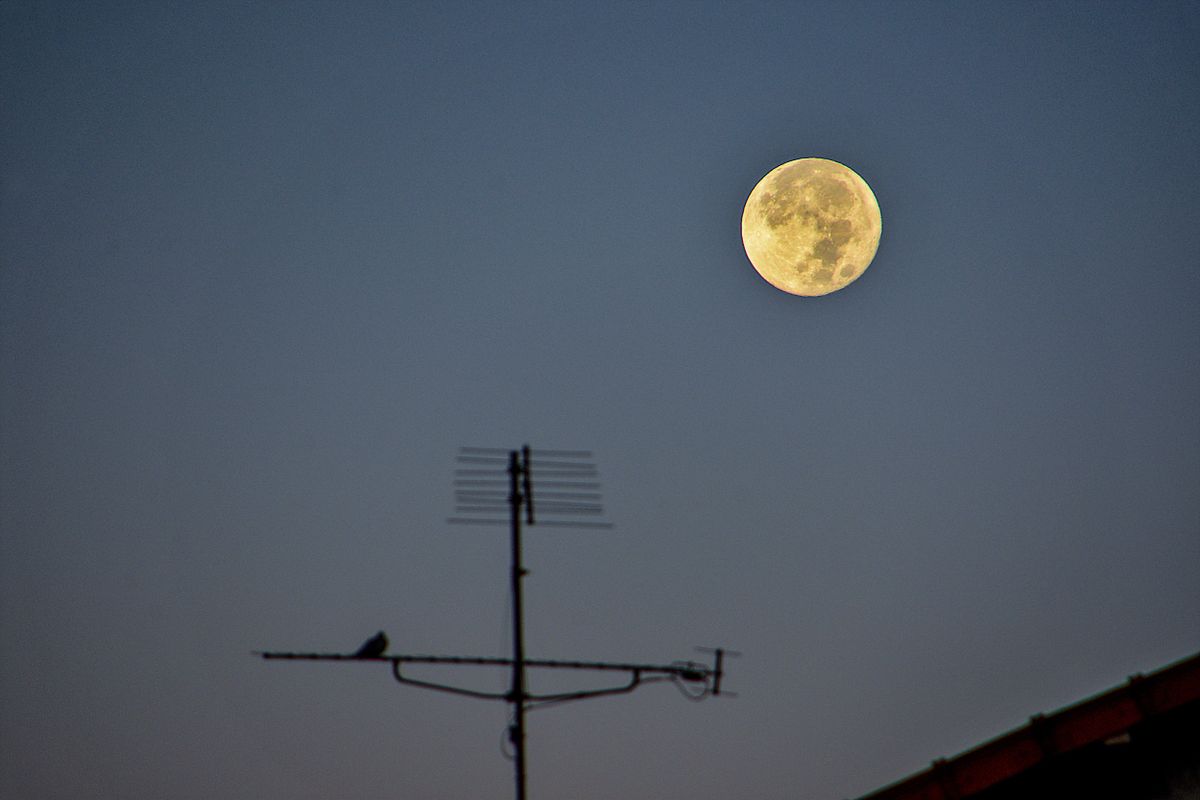This Friday’s full moon will be a particularly special one for those living in the Northern Hemisphere, as it will be known as the “Harvest Moon”.
The full moon officially occurs when it is 180 degrees opposite the sun in the sky. This will take place on Friday, September 29, at 09:57 Greenwich Time (or 5:57 a.m. Eastern Time).
What makes this full moon even more unique is that it falls closest to the September equinox. In 2023, this occurrence is slightly later than usual. While the Harvest Moon is commonly associated with September, there are years when it actually falls in October. Between 1970 and 2050, there will be 18 instances when the Harvest Moon occurs in October. The most recent one was in 2020, and the next will be in 2025.
The Harvest Moon can appear as early as September 8 (as it did in 2014) or as late as October 7 (as it will in 2025). This particular Harvest Moon also marks the fourth consecutive “supermoon”.
Supermoons are full moons that happen when the moon is at or near its closest point to Earth in its orbit, known as perigee. They provide a great opportunity for avid lunar skywatchers to observe a slightly larger and brighter moon. However, for casual observers, the difference in brightness and size may be hard to notice. There have been four supermoons in a row since July, with two of them occurring in August (the latter being a rare Blue Super Moon) leading up to this month’s final one.
Related: Last supermoon of 2023 rises this week. Don’t miss the Harvest Moon shine with 3 bright planets
Contrary to popular belief, the Harvest Moon does not stay in the night sky longer than other full moons throughout the year. The distinction of the longest presence in the night sky goes to the full moon nearest to the Winter Solstice, which will fall on December 26 this year.
Moonrise timings
What sets the Harvest Full Moon apart is that it provides an abundance of light for farmers during the peak of the harvest season. The moon’s brightness allows them to work late into the night. Additionally, the Harvest Moon rises around the same time as the sunset. At this time of year, instead of rising approximately 50 minutes later each evening, the moon appears to rise around the same time every night.
For example, in New York City, the moonrise on September 28 is at 6:35 p.m. EDT. On September 29, it rises at 7:00 p.m. EDT, and on September 30, it rises at 7:25 p.m. EDT. Compared to the usual rise time of 50 minutes later per night, the Harvest Moon rises 25 minutes later each night. This difference is more significant in southern locations. In Cocoa Beach, Florida, the average difference is 35 minutes later, while in Calgary, Alberta, Canada, the average is only 15 minutes later.
The reason behind this seasonal phenomenon is the moon’s movement along the ecliptic. During this time of year, when rising, the ecliptic forms its smallest angle with the horizon for those in the Northern Hemisphere.
Moonrise oddities at different latitudes
In contrast, for those living in the Southern Hemisphere, the ecliptic appears almost perpendicular to the eastern horizon during this time of year. As a result, the time of moonrise differs more than the average 50 minutes per night. In Melbourne, Australia, the difference is 75 minutes.
Interestingly, near the Arctic Circle at 66.7 degrees N, the Harvest Moon appears to rise at a similar time each night. Furthermore, for those living even farther north, a paradox arises—the moon seems to rise earlier.
For example, in Resolute Bay, Nunavut, Canada (latitude 74.7 degrees N), the moonrise times on September 28, 29, and 30 will be 7:24 p.m. CDT, 6:31 p.m. CDT, and 5:25 p.m. CDT, respectively. From Resolute Bay, the moon appears to rise about 60 minutes earlier each night on average.
Nighttime harvesting is gone…but the moon remains
In the past, the September Harvest Moon was a valuable resource for farmers who relied on manual labor. The moonlight allowed them to work late into the night during the autumn harvest, cutting and collecting crops by moonlight. However, with modern agricultural practices, such as the use of machinery, nighttime harvesting has become obsolete.
Fortunately, the Harvest Moon still remains. Over the next few nights, take a moment to step outside and appreciate its majestic presence in the eastern sky, casting a brilliant glow during the early autumn evenings.
Joe Rao serves as an instructor and guest lecturer at New York’s Hayden Planetarium. He writes about astronomy for Natural History magazine, the Farmers’ Almanac, and other publications.
Denial of responsibility! Vigour Times is an automatic aggregator of Global media. In each content, the hyperlink to the primary source is specified. All trademarks belong to their rightful owners, and all materials to their authors. For any complaint, please reach us at – [email protected]. We will take necessary action within 24 hours.


